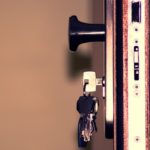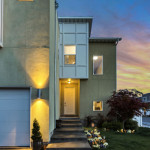Security Tips For Your Home
Summer is here and many of us are planning and going on vacations, leaving homes unoccupied and prime targets for burglars. Don’t be a victim – be sure your home is protected whether you are work or away on a trip. Here are a few simple ways to keep your home safe this summer and year-round.
- Lock Doors & Windows
It should be a habit by know, but sometimes we may forget. Before leaving your home or going to bed, be sure to lock the doors and windows of your home. Some smart home devices may even allow you to lock your doors remotely in case you forget, or if an authorized guest needs to access your home while you’re away. - Use A Home Security System
A home security system is a great defense against burglaries. The mere presence may make burglars think twice about targeting your home. These days, there are various systems available to suit different homes and budgets. If you need assistance choosing the right system for you, give us a call 888-203-6294. - Check The Locks
Much like every other area of your home, locks need maintenance, too. For the best security, install deadbolt locks on outside doors, and use the appropriate locks on sliding doors. Don’t forget to secure any pet doors before leaving as well. - Always Occupied
Your house should always appear occupied, whether you’re home or not. If you are away, use a timer to turn lights on and off to make it appear that someone is home. - Reduce Shrubbery
Don’t make it easier for burglars to hide on your property. Keep your shrubs and trees trim, especially those near upper levels and windows. - Secure Your Garage
Secure your garage like you do with your home. With the exception of detached garages, the garage has an entrance into your home and is a common target for burglars because it is often overlooked. The door leading to your garage should have a lock (a deadbolt for added security) and it is wise to park inside to make it hard to tell whether you’re home or not. - Lights
Use exterior lights to illuminate your perimeter. Motion sensing lights can be helpful for dark areas of your lawn, too. - Mail
If you’re going n vacation, stop your mail delivery or have someone pick it up. Built up mail is a tell tale sign that no one is home. - Outdoor Wires
Telephone lines and electrical wires should not be easily accessible. If these are exposed and easy to get to, intruders will attempt to disarm systems by cutting the wires. - Change The Locks
If you lose your keys, move to a new home, or have someone move out of your home, change the locks on the doors.
Share your home safety hacks with us on Facebook, Twitter, LinkedIn, and Pinterest. You can browse our stock of quality surveillance equipment and security cameras online at SecurityCamExpert.com. Contact us at 888-203-6294 to request a free quote or schedule a site survey.
Should You Install Indoor Security Cameras?
Security cameras offer home and business owners peace of mind by allowing vigilance over properties. As a homeowner, installing an indoor security camera can help you check in on pets or simply watch over your home while you’re away. Although these benefits are appealing, there are a few things to consider before deciding on installing indoor security cameras.
Worries
It’s true that security cameras are meant to put your worries at ease, but at the same time, they can feed your anxiety. Because you can check in on things at any time, you may find yourself obsessively monitoring your feed.
To minimize this, set up a camera with motion detection so that it may alert you when there is activity. If you have pets, you can filter out their activity so that you are not inundated with false alarms.
Hackers
With internet-connected security cameras, you run the risk of hackers gaining access to your camera. This type of attack is much more common with cameras that have little to no built-in security. Luckily, there are ways to combat these risks. First, you should invest in well-know, higher quality security cameras that have better built-in security. Once you have chosen a camera, change any default logins and use strong, hard-to guess passwords. Also, be sure that your home Wi-Fi network is also highly protected.
Pets
As previously mentioned, indoor security cameras provide an easy way to keep an eye on your pets when you’re away. But when it comes to motion detection, they can easily trigger false alarms. Once you adjust your settings to accommodate pet activity, the security camera can be a great help. Whether you’re missing your pet while you’re away or if you’re working at home, security cameras allow you to see what they are up to.
Valuables
Of course, security cameras are meant to keep you safe from burglars. Their presence alone can help to deter criminal behavior. But in the case that it does not, it can provide useful footage that can be submitted as evidence.
Do you have security cameras installed at your home or business? How have they helped? Share your experiences with us on Facebook, Twitter, LinkedIn, and Pinterest.
For a great selection of quality IP and HD security cameras for your home or business, please visit SecurityCamExpert.com or call 888-203-6294 today!
Secure Your Home
When was the last time you evaluated your home security? With summer, and likely a vacation or two, around the corner, now is a great to time reassess your home security measures and upgrade or improve them as needed.
Doors
A surprising amount of burglars enter homes through the front door, so be sure that all of your doors (especially the front door) are strong and secure. Inspect the door frame, ensure the hinges are protected, and if your door has a mail slot, make sure someone can’t reach through and unlock the door.
To further safeguard your doors and entryways, you can install a deadbolt and/or add a strike plate. You can even upgrade to smart locks or install a doorbell camera. And if you have any sliding glass doors, remember to reinforce them by using a window bar or dowel in the track. Or you can invest in a door sensor or glass break sensor, which will alert you if the door is opened or tampered with.
Windows
Another common entry point for burglars is windows. And unfortunately, window latches and locks can be flimsy and rather ineffective. To better secure your windows, install improved locks or key-operated levers, or implement window bars. You can even reinforce the glass with window security film and install window or glass break sensors. In addition, you can plant prickly bushes under first-floor windows, but be sure to keep them trimmed.
Lighting & Landscape
Intruders want to be as inconspicuous as possible, so why not shine a light on them? Outdoor lighting can help to keep burglars at bay. Light up your yard (front and back) and pathways and place lights near the garage or other outdoor structures. Motion-activated lighting, solar-powered lights and timers can be helpful as well.
While the lights help to prevent burglars from hiding in the darkness, maintaining your landscape plays an important role, too. Be sure that trees and shrubs are trimmed down to eliminate any hiding spots. If there are trees near windows, remove them or add extra security to those windows. And remember to put away stools, ladders, and other tools and lock your gates and sheds.
Garage
An attached garage offers another way to access your house. But even if it is detached, burglars know there’s likely good stuff stored in there. You should always lock all doors to the garage, both interior and exterior. Consider keeping your garage door opener in the house. That way, a burglar can’t steal it from your car. You may even consider upgrading to a smart garage door opener, which alerts you when the door is opened or closed and enables you to control it remotely.
Wi-Fi Network
Securing your home wireless network is also an important part of your overall home security. To keep hackers off your home network, be sure to secure your wireless router and enable WPA (Wi-Fi protected Access) or WPA2 encryption. You should also rename and hide your network, use a firewall, install antivirus and anti-malware protection, and always create strong passwords and change them periodically.
Security System
These days, you can find a home security system that suits your needs and budget. Depending on your unique situation, you may consider DIY versus professional installation, along with the upfront and monthly costs, and the different features offered.
If they are not part of your security system, you may want to install security cameras outdoors, indoors, or both. Some features to look for include remote access, motion detection, night vision, and Wi-Fi capability. If you need assistance, you can visit SecurityCamExpert.com or call us at 888-203-6294.
Your security is our priority. Contact us to learn more about our products and installation services, site surveys, or to request a FREE quote! You can also connect with us on Facebook, Twitter, LinkedIn, and Pinterest.
Choosing The Best Nanny Cam
Nanny cams help worried parents keep an eye on their kids or their own elderly parents. They allow individuals to check in at home for peace of mind. Whether you will be installing them in hidden areas or in plain sight, here are a few things you should consider when purchasing a nanny cam.
- High Definition (HD)
This is a video format which delivers a high pixel rate for improved clarity. While this is a great feature to have, it does increase the price and requires more storage. Think about your storage requirements, budget, and individual needs before making a decision. - Audio
Nanny cams with audio let you speak to the persons in the room remotely. Before choosing a camera with two-way audio features, please look into legalities and follow the audio recording laws when you need to record audio. - Wireless
Wireless security cameras allow you to watch live video feeds rather than recording for later review. You may want to opt for wireless cameras if you will be using them for a baby monitoring system. - Compatibility
For remote monitoring, you want to be sure that your nanny cams are compatible with your smartphone or devices. That way, you can easily check in on your kid or parent and caregivers while you’re away. - Motion Activation
Because monitoring our surveillance feed 24/7 is not feasible, motion-activated alerts are a great asset. Motion activation immediately sends you alerts when motion is detected in the range of view. - Recording
While most nanny cams allow video recording on a SD card, this limits your storage capacity. For improved storage and reliability, choose a nanny cam with a network video recorder (NVR) or cloud storage. - Viewing Angle
Choosing a wide-angle nanny camera will depend on the size of the room or area you would like to cover. If you do have a large space to monitor, be sure that your security camera has a pan-tilt function. - Power Source
Typically, you can choose between battery-powered or AC power nanny cams. Battery-powered nanny cams use rechargeable battery packs, while AC powered cameras are powered directly from the outlet. Your decision may be dependent upon where you plan on placing your nanny cam. If no outlet is available in the area, you may need to use a battery-powered nanny cam. Be sure to look into battery life and invest in a backup battery should you go that route. If you need ongoing monitoring and recording, you may want to consider AC powered nanny cams.
If you need assistance choosing a nanny cam or home security cameras, please do not hesitate to call 888-203-6294 to speak with us. You may also browse our stock online at SecurityCamExpert.com or connect with us on Facebook, Twitter, LinkedIn, and Pinterest.
Halloween Safety & Security Tips
Halloween is almost here, and this year it falls in the middle of the week. That makes your commute home a bit trickier as children may be roaming the streets already. And although it’s always important to watch for pedestrians, it is especially crucial on Halloween.
Aside from being safe on the road, it’s imperative to mind your children and your home. Here are some Halloween security tips to help you enjoy a safe and happy Halloween.
Trick-Or-Treating
Although going door to door collecting candy and treats from strangers is a Halloween tradition, it poses safety risks.
- Check All Treats Before Eating – All treats should be inspected by adults before children eat them. To be safe, toss anything that looks tampered with and anything that doesn’t come in a pre-wrapped package.
- Light Up The Night – Make sure your children are easily visible with flashlights, glow sticks, or even reflective tape. To make it easier, try using transparent bags for your children’s treats and toss a glow stick in there. That way, your kids have one less thing to carry and they are still easily visible.
- Consider An Alternative – If you would rather your children not go trick-or-treating, you may want to consider an alternative such as a haunted house or hayride. Or you can visit friends or family so that you need not worry about what they get in their bag.
- Host your own Halloween – Or you can simply host your own Halloween event at your home. This way, you are in the comfort of your own home and can keep an eye on your children and guests.
A Night On The Town
Leaving a porch light on when you leave for the night may not be the best idea. On Halloween, that is commonly known as a sign to come knocking for treats, and thus, people will soon realize that no one is home. Here are some ways you can protect your home while you are out.
Lights
Be sure to keep your home well lit. This will deter potential intruders or pranksters as it will appear as if someone is home and still awake. Outdoor lighting will eliminate shadows and hiding places.
Security System
Engage your security system if you have one. If you do not, now would be a great time to invest in a solid home security camera system.
- Settings – Review your camera settings and adjust accordingly. Keep your cameras focused on potential entryways (doors, windows), but you may also want a view of the streets and other areas around your home – pranksters may attack from any or all sides.
- Timers – Make use of light timers if you have them. Set timers to have specific rooms light up every now and then. For example, leave the living room light and television on but have the kitchen light turn on and off occasionally so it appears that someone is getting up for a snack.
- Arm Your Security System – Sometimes we may forget so it’s worth the reminder to set the alarm and lock your doors and windows before you leave.
Cell Phones
For most of us, cell phones act as our lifeline and have become essentials alongside our wallets and keys. If your child does not have a cell phone and will not be with you on Halloween, be sure you have the phone number for the supervising adult or someone who will be accompanying your child. You may even let your child borrow your phone for the night so that you have a way of keeping in contact.
- Charge It – Whether it’s your own phone or your child’s or both, be sure that all phones are fully charged before heading out. If your child is going out without you, you may want to check the signal reception where he/she may be.
- Check Your Security System – Your security system most likely enables remote viewing via an app or device, and should alert you of any suspicious activity. If alerts are not enabled, be sure to check in periodically.
Staying In
Although we may hate to imagine that persons with bad intentions may target us on Halloween, it is always a possibility. If you’d like, you can leave a bowl of candy on the porch with a sign that tells children how many they can take and that they are under surveillance. If you sit on the porch and hand out candy, keep your cell phone close and sit with a friend or family member (safety in numbers).
In addition to the aforementioned security tips, it is always in your best interest to use common sense on Halloween and every day. Make sure children stay away from strange neighborhoods and that they know they should not go inside someone’s home. If possible, travel with a group for maximum safety.
Do you have any other Halloween safety tips to share? Connect with us on Facebook, Google+, Twitter, LinkedIn, and Pinterest.
Invest in an affordable security camera system to protect your home. Visit SecurityCamExpert.com to browse our selection or call 888-203-6294 to discuss your options.
What Can Your Security Camera Do?
Surveillance camera systems help to provide home and business owners security, protection, and peace of mind. But did you know you can use your security cameras for additional purposes? Here are some lesser known uses and benefits of security camera systems.
- Time Lapse Videos
Some cameras come equipped with a time lapse feature which can allow you to create videos to display changes over time. These are great for construction or demolition sites, for capturing weather, nature, or wildlife.
- Animal Life
Do you manage a barn, farm, or ranch on your property or remotely? Security cameras can save you time and travel costs by allowing you to check in on your animals remotely. And if you have pregnant livestock, you can keep an eye on the progress and possibly record the birth.
- Pranks
If your family is a fan of pranks, security cameras can come in handy. Features like two-way audio and alarms can startle your unsuspecting guests, and you can capture the reactions as a souvenir.
- Check Weather
Did you know security cameras help when checking the forecast? When you see images and footage from remote areas, such as when you are checking a weather application, those are taken from strategically placed security cameras.
- Capture Precious Family Moments
Whether it’s your baby’s first steps or first words, you may be able to capture it on video. If you were away when it happened, you can review it later, and you can also share the special moment with other family members and friends.
- Insurance Discount
While the cost of security cameras may discourage homeowners, the benefits of having it should be considered. Aside from peace of mind, insurance agencies often offer a discount as well. And this discount can help to offset the costs of the system.
- Prevent Abuse
Nanny cams help to ensure that your babysitter is behaving properly and that your children are safe. On the other hand, nanny cams can also help you keep an eye on your elderly family members and caregivers to make sure your loved ones are not in danger.
- Medical Assistance
Speaking of seniors, especially those who live alone, some home security systems come equipped with emergency pulls or medical alert pendants. When triggered, these instantly dispatch emergency assistance to homes.
- Stop Trespassing & Vandalism
Whether it’s the neighborhood kids or unwelcome intruders, your security cameras can help to prevent any trespassing or vandalism.
- Household Mysteries
Have things gone missing or end up in random places in your home? Want to know who finished your leftovers in the refrigerator? You can review your surveillance footage to solve the mystery.
- Guard Your Garden
For the gardeners out there, you can set up security cameras with motion detection to monitor your goods. If squirrels, raccoons or the like are ruining your crop, you can set up your motion sensor to sound an alarm to scare off the critters.
- Latchkey Kid Safety
Security camera systems enable you to have peace of mind when it comes to latchkey kids. Your system can alert you when someone enters your home, therefore, you will know when your kids get home from school. You may disarm the alarm remotely or have your children do it.
- Increase Resale Value of Home
Having a surveillance system already installed in your home can increase the resale value of your home. It can also keep your home protected during the selling process as you can keep an eye on the strangers that come and go during open houses and inspections.
What other benefits can you think of? Share with us on Facebook, Google+, Twitter, LinkedIn, and Pinterest.
Let us help you choose and install the security camera system of your dreams. Browse our stock online at SecurityCamExpert.com or call 888-203-6294 today!
Protect Your Home
As we embark on the summer season, home security is emphasized. The long days and warm weather call for later nights, weekend getaways, and vacations. Whether you stay home or not, up your home security with these helpful tips.
Exterior Doors
With several different points of weakness (ex. handle, lock, hinges, frame) an exterior door is a common target for burglars. Sliding doors and French doors present even more weaknesses.
- Invest in a sturdy deadbolt lock – the spring-latch lock on your door handle is easily compromised.
- Install door armor kits on exterior doors, which usually include 3″ screws to replace short screws that come with door hardware, hefty strike plates for handles and deadbolts, and metal framing to place around the hinge and handle/lock hardware. This helps to reinforce the weak points of your door and safeguard against intruders.
- Add auxiliary locks to sliding doors, such as loop locks, security bars ( also known as sliding door polls or Charlie bars), or vertical bolt locks.
- Add a security bar to French doors to prevent kick-ins. While they may not be visually appealing, they are effective.
- With French doors, and most doors in general, make sure all of your hinge pins are interior-facing to avoid giving burglars easy access without force.
- Glass doors should be enforced with security film. This prevents glass from being easily broken.
Windows
Luckily, there are numerous ways to increase window security, whether they are old or you are installing new windows.
New windows:
- Choose reinforced (tempered or laminated) glass or acrylic (polycarbonate) windows. These are much harder to break than traditional glass windows and can help deter criminals from continuing after the first attempt at breaking in.
- Choose multiple panes of glass instead of one large pane. Multiple glass panes provide added strength and durability.
Old Windows:
- Add after-market window locks to your built-in window locks. These provide an easy and inexpensive way to prevent windows from being forced open. Depending on the style of your window, you may need double hung window locks, sliding window locks or locks for casement windows (sometimes called crank windows).
- For additional protection, exterior windows bars may be added. Aside from protecting your windows, most of these window bars come in decorative designs to accent the style of your home.
- As previously mentioned, security film can be added to windows to decrease the likelihood of break-ins (thicker film provides the highest level of protection).
Garage Doors
Unfortunately, an attached garage door can be easily compromised, and garage door security is often overlooked. What is especially troubling is that after gaining access, burglars can quickly shut the garage door behind them and take their time rummaging through your home without being seen.
- Refrain from leaving garage door openers in your vehicles. It may seem inconvenient, but it is worth the security.
- Secure your garage door emergency release to prevent easy intruder access. You may fasten it with a zip tie (which can be broken by yanking the release cord) or place a barrier between the top of the door and the release.
- A garage door sensor can alert you when your garage has opened. Newer garage door openers have this feature built-in as well as an auto-closing feature that will close your garage door after a long period of time.
- A deadbolt on the door between your garage and home will help to prevent further intrusion. You may want to also install a peephole viewer on this door to make it easier to inspect the garage without opening the door.
- Install a bright, motion sensing light in the garage to bring attention to an open garage door.
Make Your Home Look Occupied
Regardless if you are home or not, you want to make it look like your home is occupied. An unoccupied home is a prime target for burglars.
- Use strategically placed lights and lamps with timers. Lights turning on and off in different rooms will make it appear as if you are home.
- Leave a television or radio on at moderate volume. Noise will make criminals think you are home, and the light from the television mimics activity.
- Leave some curtains or blinds open. This is helpful if you are using light timers or a television to cast light. It can also be helpful should police or a neighbor need to take a look into your home.
Perimeter Security
Some of the best tactics are not thought of as prevention techniques.
- Get a dog. A barking dog may make enough noise to bring attention to an approaching burglar and deter them from proceeding.
- Invest in a home security system and signage. This may deter them from targeting your home, and if it does not, you know your home is protected and that police will be alerted in a timely fashion.
- Outdoor lighting is a great way to keep intruders away. Darkness allows intruders to sneak around your property unnoticed, but dusk-to-dawn porch lights and motion-activated lights around your perimeter help to increase visibility.
- Keep a car parked in the driveway. This makes it seem that someone is home.
- Maintain your landscape and keep bushes and shrubs near windows trimmed to minimize hiding spots. You may even consider planting thorny or spiked plants (ex. blackberry bushes, holly, juniper) to prevent burglars from getting too close.
Have your own tips to share? Connect with us on Facebook, Google+, Twitter, LinkedIn, and Pinterest!
Need help finding the right home security system for you? Visit SecurityCamExpert.com to browse our selection of surveillance systems or call 888-203-6294 today!
Tips For Improving Your Home Security System
Home security camera systems help home owners protect their property and loved ones. They provide an extra set of eyes to monitor your home whether you are at home or away. Because of the financial investment, it is important to ensure that everything is working properly.
There are many ways in which you can optimize your surveillance cameras to get the most out of your security system. Here are a few smart security tips to improve your system.
Use Motion Detection
A security camera that is recording everything all the time sounds good in theory, but will require a large amount of memory and power. It will also be more difficult to sort through the mundane footage to find what you are looking for.
Thanks to motion detection, your camera does not have to record all the time. Motion detection enables your camera to start recording when activity in the field of view triggers the sensor. This means you will not need to worry about running out of storage space and makes it easier to sort through your recordings.
Consider Location
Choosing the right location for your security cameras is crucial. Be sure to adjust the angle of your camera to maximize your field of view and ensure that obstructions, such as trees or bushes, do not block the camera’s view.
Other Home Security Solutions
Although security cameras are important, they cannot do everything. Pairing your security camera system with a high quality and reliable alarm system can increase your home security overall and may even help with insurance discounts.
Multiple Cameras
While an outdoor security camera is common, often times, one camera is not enough. If there’s only one security camera present, it’s likely that burglars will work around that. You want your security cameras to monitor high traffic areas and points of entry (ex. front door, back door, first floor windows). That way, you get more comprehensive video surveillance should you become a target for home invasion.
Proper Maintenance
You can’t just set it and forget it when it comes to your surveillance system. Keeping your cameras clean and any potential obstructions at bay will help maintain the performance and effectiveness of your system. Skipping routine maintenance checks may cause your cameras to miss important moments.
Do you have any other home security tips? Share with us on Facebook, Google+, Twitter, LinkedIn, and Pinterest.
For a great selection of affordable security cameras and CCTV surveillance camera systems, please visit SecurityCamExpert.com. For more information about our installation services or to request a free quote, please call 888-203-6294.
Motion Detection: How It Works
Security cameras equipped with motion detection can be very helpful for home and business owners. Motion sensor cameras allow users to rest easy knowing the built-in sensors will alert them when activity is detected, eliminating the need for monitoring live feeds around the clock.
While motion detection can be very convenient, it can also prove to be a nuisance. False alarms caused by various reasons, such as pets, natural environmental changes, or even changes in lighting, can be frustrating, confusing, and a waste of time. In order for you to make the most of the motion detection feature, here’s what you need to know.
Types of Detection
While there are many different technologies that detect motion (ex. light pulses, thermal measurements, radio waves), for consumer security cameras, there are two methods that are commonly used.
Passive Infrared (PIR)
This method detects the ambient heat emitted by all living beings and is sometimes referred to as “heat vision.” The sensor is triggered when it detects enough movement of these warm “objects” and/or a significant temperature disparity between the object and the background scene. When triggered, it signals the security camera to start recording, and thus, the user is alerted.
Computer Vision (CV)
This approach involves camera software that analyzes sequential frames of live video for differences and registers a motion event when a significant change is detected. With that said, CV includes many different methods, which depend on the desired outcome and technical preference of the designers.
Of these methods, one of the easiest involves looking for a significant change in pixels over short periods of time compared to the longer term average. This will produce a simple ‘something happened’ signal. Another method tracks groups of pixels and tries to identify directional patterns in order to recognize moving objects.
What all of these methods have is common is the end goal – to detect motion and, if possible, determine the shape of the object that moved. Once that goal is achieved, more advanced methods can be applied to classify the moving object (ex. person, animal, vehicle, tree) to determine which detection signals are important (ex. person or vehicle) or irrelevant and can be dismissed (ex. animal or tree).
Pros & Cons
- PIR sensors are more reliable than CV-based cameras when it comes to filtering out insignificant activity (ex. curtains fluttering in the breeze from a nearby fan, change in the light streaming through a window)
- PIR is power efficient, thus often used in battery-powered cameras. PIR keeps these cameras them in a low-power, non-recording state until the PIR sensor detects motion. When motion is detected, they switch to a high-power recording state for a fixed period of time (ex. to capture a 30 second video clip) or until motion stops.
- The low-power mode of PIR can be a disadvantage as it may take more time to wake up and start recording than CV-based cameras. Consequently, you may miss part of the action that triggered the motion alert, such as the intruder’s approach when their face is most visible, which matters with forensic evidence. By nature, they are also incapable of detecting motion through glass, thus are not suitable for scenarios such as monitoring your yard with an indoor cameras aimed through a window.
- CV motion detection provides greater analysis of the scene and for identification of the object creating motion through advanced features (ex. person detection, facial recognition). However many of the algorithms that make this possible are too computationally intensive to run locally on the camera. Instead, they are computed on remote servers in the cloud, where they often can only be unlocked with a paid subscription, which can add significantly to the total cost of ownership of the camera.
- Because CV detection is also dependent on the quality of the algorithms, it is also more susceptible to false alarms. That is, any large change (ex. spinning ceiling fan, leaves blowing outside window, change in ambient lighting) can register as motion.
False Alarms
Of course, false alarms are one of the most frustrating downsides to motion detection. Luckily, manufacturers are aware of this and offer different ways to reduce these instances.
- PIR cameras usually allow users to adjust the sensitivity level within the accompanying app so that more- or less-pronounced motion triggers the sensor. For example, reducing the sensitivity level could require a moving object to be warmer or closer to the camera for it to be triggered.
- CV offers more options for combating false alarms. A popular option is to set motion detection zones, which basically allows you to tell your camera to ignore activity in certain parts of the field of view while focusing on specific areas for motion. This approach is fairly effective as your camera can focus on windows and doors (where breaches are most likely to occur) rather than the activity within your home.
- Based on the geometric properties of a moving object, CV is able to make quick judgment calls. For example, something very small relative to the field of view is either a small object (ex. a floating dust mote) or a larger object far away, both of which are not cause for triggering any sensors.
- With more advanced technology, CV-based cameras may also include person detection or facial recognition to decrease false alerts. Both technologies require a pre-existing database of recognized individuals and usually require a few weeks of use before accurate results are produced. And while these features are advanced, they are only as strong as the algorithms behind them (which is why different cameras with facial recognition can produce different results).
Motion detection is still a work in progress, and at this point, you likely get what you pay for. The good news is that our technologies are always improving, thus, motion detection has the potential for greatness on the future.
What are your thoughts on motion detection security cameras? Have you had success or failure with them? Share your experiences with us on Facebook, Google+, Twitter, LinkedIn, and Pinterest.
Visit SecurityCamExpert.com to browse our wide selection of affordable CCTV security cameras and surveillance packages. Call 888-203-6294 to request a site survey or free quote today!
Home Security Misconceptions
When it comes to home security systems, there are many different measures to can take to protect your property. Unfortunately, some homeowners have false impressions about home security, leaving them at risk. To ensure that you are safeguarding your home and loved ones properly, review these common misconceptions about home security.
- Home security is too expensive.
The security market has grown over the years, offering a wide range of security and surveillance options suitable for any budget. In addition, some insurance companies offer discounts for home security systems, thus increasing your savings and the value of your system.
- Your neighborhood is already safe.
Even the safest neighborhood can become a target. Protect your home from possible intruders, vandals, or even arson.
- I have a dog.
While pets can act as a security measure, they can also become a liability. Your pet could be injured during a break-in or may even be stolen. And while there are stories of pets saving their owners from house fires, they cannot protect your home and valuables from fire damage.
- Hardwiring my home is difficult.
Even older homes can be wired with a modern home security system. Whether your home is old or new, we can wire your system. Contact SecurityCamExpert to learn more or request a free quote.
- Alarm systems are unreliable.
Since inception, alarm system technology has advanced, minimizing false alarms and improving overall performance. Because alarm systems use unique radio signals, interference is minimized, thus enhancing reliability.
- Intruders can outsmart an alarm.
If your alarm is not installed properly, this may be likely. But modern alarm and security camera systems are so advanced, burglars would not know where to start. Also, the more complex your system, the harder it will be to disarm.
- My neighborhood watch program keeps us safe.
The neighborhood watch does not operate around the clock. When they are not watching, your home is vulnerable to potential dangers.
- Insurance can replace my stuff.
Insurance may replace what is lost, stolen or damaged, but they cannot restore your peace of mind after a home invasion. A home security and alarm system can help you rest easier.
- I use expensive lock systems in my house.
Locks are only one layer of a comprehensive security system. These locks can be broken or bypassed with enough determination. Should these become compromised, you should have backup security measures in place.
- Authorities cannot respond in time anyway.
Response times may vary, however, police and other emergency responders can respond to alerts in a matter of minutes.
As you can see, you can make all the excuses in the world, but the facts remain the same – a solid home security system can help protect you and your loved ones. Ditch these misconceptions ad shop our selection of home security systems today! Visit us online or call 888-203-6294. You can also connect with us on Facebook, Google+, Twitter, LinkedIn, and Pinterest.









